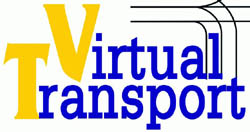Fogalmak
Railtrack
- Részletek
- Kategória: Fogalmak
- Készült: 2008. szeptember 22. hétfő, 19:02
From Wikipedia, the free encyclopedia
Railtrack was a group of companies that owned the track, signalling, tunnels, bridges, level crossings and all but a handful of the stations of the British railway system from its formation in April 1994 until 2002. On October 3, 2002, the main operating arm - the owner and operator of the national railway network, Railtrack PLC - was sold by its parent company Railtrack Group plc to "not for dividend" company Network Rail (a company limited by guarantee) and was later renamed Network Rail Infrastructure Ltd. With that sale, the national railway network passed into the hands of a company without a share capital or shareholders, and in all essential senses the short, troubled and controversial life of Railtrack came to an end
Railtrack Group plc has been renamed the RT Group, is currently in members' voluntary liquidation and will remain in existence until the final liquidation payment is made to shareholders in 2008.
Founding
Founded under Conservative legislation that privatised the railways, Railtrack took control of the railway infrastructure on April 1, 1994 and was floated on the Stock Exchange in June 1996.
After a turbulent existence, which took it from the heights of City approval to the depths of public, industry, regulatory and political opprobrium, Railtrack plc was placed into railway administration under the Railways Act 1993 on October 7, 2001, following an application to the High Court by the then Transport Secretary, Stephen Byers.
The parent company, Railtrack Group plc, was not put into administration and continued operating its other subsidiaries, which included property and telecommunications interests.
Network Rail was formed with the principal purpose of acquiring and owning Railtrack plc. Originally the Government allowed private companies to bid for Railtrack plc. However, with limited availability of financial data on Railtrack, the political implications of owning the company and the very obvious preference of the government that the national railway network should go to Network Rail, no bidders apart from Network Rail were forthcoming, and Network Rail bought Railtrack plc in October 2002.
Network Rail's acquisition of Railtrack plc was welcomed at the time by groups that represented British train passengers. The attitude of Railtrack's customers - the passenger and freight train operators - was much more cautious, especially as they were wary of a corporate structure under which shareholders' equity was not at risk if the company's new management mis-managed its affairs. The train operators had suffered for years from the failures of Railtrack, and did not then see how a non-equity model - with fewer and weaker incentives to perform well - would make things better.
Railtrack had been severely criticised for both its performance in improving the railway infrastructure and for its safety record. Between its creation and late 1998, the company had had a relatively calm relationship with its first economic regulator, John Swift QC, but critics said that the regulator had not been tough enough and that the company had, as a result, been able to abuse its monopoly position. In particular, its customers, the passenger and freight train operators, were desperate for regulatory action to force the company to improve its stewardship of the network and its performance. Swift had been appointed rail regulator in 1993 by the then Conservative transport secretary John MacGregor MP. When the Labour government took over after the general election in May 1997, the new transport secretary (and deputy prime minister) John Prescott MP took a much harder line. When Swift's five-year term of office expired on November 30, 1998, he was not reappointed. After an interim holding period, during which Chris Bolt, Swift's chief economic adviser and effective deputy, filled the regulator's position, in July 1999 a new rail regulator began a five-year term, and a new, much tougher regulatory era began.
The new rail regulator, Tom Winsor, had been Swift's general counsel (1993-95), and adopted a more interventionist and aggressive regulatory approach. At times the relationship was stormy, with Railtrack resisting pressure to improve its performance. On April 3, 2000, The Guardian newspaper, under the headline "Railtrack Declares War on Regulator", reported: "Railtrack is adopting a deliberate 'culture of defiance' against the rail regulator". Gerald Corbett, Railtrack's chief executive at the time, and Winsor clearly saw things very differently, and the regulator had the greater power. Railtrack resisted regulatory action to improve its performance, and as the regulator probed ever more deeply, serious shortcomings in the company's stewardship of the network were revealed.
Demise
The fatal accidents at Southall in 1997 and Ladbroke Grove in 1999 had already called into question the effect that the fragmentation of the railway network had on both safety and maintenance procedures. Regulatory and customer pressure had been increasing, and the company's share price began to fall sharply as investors realised that there were serious faults in the company's ability to tackle and solve its greatest problems.
It was the Hatfield crash on October 17, 2000 that proved to be the defining moment in Railtrack's collapse. The subsequent major repairs undertaken across the whole British rail network are estimated to have cost in the order of £580 million. According to Christian Wolmar, author of On the Wrong Line, the Railtrack board went into panic mode in the wake of Hatfield. Because much of the engineering skill of British Rail had been split off into the maintenance and renewal companies, Railtrack had no idea how many Hatfields were waiting to happen, nor did they have any way of assessing the consequence of the speed restrictions they ordered - restrictions that brought the railway network almost to a standstill. Meanwhile, the costs of modernising the West Coast Main Line were spiralling out of control, and coupled with other debt, Railtrack plunged from profit to a loss of £534m, causing it to approach the government for funding, which it controversially used to pay a £137m dividend to its shareholders in May 2001. This was the last straw for the increasingly impatient Labour Government, who exploited a mechanism set out in the Railways Act 1993 to place the company into railway administration - effectively a special type of receivership which allowed the railway network to continue operating despite the financial problems of the operator.
Shareholders initially received no compensation nor were they promised any. The Government considered that the decision to put Railtrack into railway administration was valid and justified.
Railtrack's parent company, Railtrack Group, was placed into members’ voluntary liquidation as RT Group on October 18, 2002. The Railtrack business (and its £7 billion debt) had been sold to Network Rail for £500 million, and the various diversified businesses it created to seek to protect itself from the loss-making business of running a railway were disposed of to various buyers. £370 million held by Railtrack Group was frozen at the time the company went into administration and was earmarked to pay Railtrack shareholders an estimated 70p per share in compensation. The Group's interest in the partially built High Speed 1 line was also sold to raise funds.
Railtrack shareholders formed two groups to press for increased compensation. A lawyer speaking for one of those groups remarked on GMTV that his strategy was to sue the government for incorrect and misleading information given at the time Railtrack was created, when John Major was Conservative Prime Minister. An increased offer of up to 262p per share was enough to convince the larger shareholder group, the Railtrack Action Group, to abandon legal action. The Chairman, Usman Mahmud, believed that there was little chance of success pursuing legal action.
The legality of the decision to put Railtrack into railway administration was challenged by the smaller Railtrack Private Shareholders Action Group. Their action against the government alleged that the Secretary of State for Transport at the time - Stephen Byers MP - in making the decision to cut off funding for Railtrack and asking the High Court to put the company into railway administration, had committed the common law tort of misfeasance in public office.
This was the largest class action ever conducted in the English courts - there were 49,500 claimants, all small shareholders in Railtrack. Keith Rowley, QC, the barrister for the shareholders, alleged Byers had "devised a scheme by which he intended to injure the shareholders of Railtrack Group by impairing the value of their interests in that company without paying compensation and without the approval of Parliament". The case was heard in the High Court in London in July 2005; some embarrassment was caused to Byers when he admitted that an answer he had given to a House of Commons Select Committee was inaccurate.
The judge found on October 14, 2005 that there was no evidence that Byers had committed the tort of misfeasance in public office. This would have required the shareholders to establish that Byers had been motivated by a deliberate desire to injure them, and the judge found that his motive had been to improve railway organisation. Byers asserted that he had been entirely vindicated by the judgment, but the reality was that the judge had only found that there was no evidence of malice on Byers' part. The propriety or legality of any of the other actions of the government in the run-up to the administration was not decided upon in the judgment, and Byers and Alistair Darling MP - by then transport secretary - were criticised for asserting that the judgment amounted to a vindication of everything the government had done.
The private shareholders decided not to appeal the judgment, because there were no legal grounds for doing so. For many of them - who had contributed around £50 each, on average, to the fighting fund to bring the action - the case had served its purpose.
The case, however, had compelled the government to answer for its actions, and exposed many of the inner workings of Whitehall. In particular, the case forced the public disclosure of thousands of documents and communications from within government - including confidential minutes of meetings with the prime minister and the chancellor of the exchequer - which would not otherwise have seen the light of day.
The circumstances in which Railtrack had been put into administration were highly controversial, with allegations in Parliament on October 24, 2005 that the company had not been insolvent at the time (October 7, 2001) and so the administration order had been wrongly obtained. This was because of the jurisdiction of the independent rail regulator - at the time Tom Winsor - to provide additional money to maintain the company's financial position. Alan Duncan MP, then the shadow transport secretary, said in Parliament that this aspect of the affair - which was not dealt with in the shareholders' case in the High Court - was "perhaps the most shameful scar on the Government's honesty" and "an absolute scandal". It remains to be seen whether this part of the controversy will resurface in political debate.
Byers apologised in the House of Commons on October 17, 2005 for having given a "factually inaccurate" reply to the Select Committee but said that he had not intended to mislead them. This personal statement to Parliament was not accepted by the MP who had asked the original question, and the matter was remitted to the House of Commons Standards and Privileges Committee for investigation. As a result of that committee's report, Mr Byers made another statement of apology to Parliament.
The Guardian reported on November 23, 2001, that a further £3.5 billion may be needed to keep the national railway network running, a sum disputed by Railtrack management. Profits announced mid December were claimed to undermine the Government's case that the company had ceased to be commercially viable.
After a year in administration, Railtrack PLC was sold by RT Group to Network Rail, and the company was renamed Network Rail Infrastructure Limited.
For most of the year in administration, the government's position had been that the new company would have to live within the existing regulatory settlement (£14.8 billion for the five years 2001-2006). However, it soon became obvious that that was impossible, and that the aftermath of the Hatfield crash had revealed that the network required significantly more money for its operation, maintenance and renewal.
To get Railtrack out of administration, the government had to go back to the High Court and present evidence that the company was no longer insolvent. The principal reason given by the government to the court for this assertion was the decision of the rail regulator - announced on September 22, 2002 - to carry out an interim review of the company's finances, with the potential to advance significant additional sums to the company. The High Court accepted that the company was not therefore insolvent, and the railway administration order was discharged on October 2, 2002.
The rail regulator carried out the interim regulatory review and on December 12, 2003 announced that he was allocating the company an additional £7.4 billion for the five years 2004-2009. Critics argued that if the rail regulator's jurisdiction to award such a large sum to the company meant that it was not insolvent - thus justifying the ending of the administration - there must be serious questions about whether Railtrack had been insolvent a year earlier when the government had asked the High Court to put it into administration. This matter was the subject of significant controversy in a debate on October 24, 2005 in the House of Commons, when Alan Duncan MP - the shadow transport secretary - made serious allegations about the facts which the government had disclosed to the High Court when the company had been put into administration on October 7, 2001. In the debate, Stephen Byers MP - the transport secretary at the time - cautiously replied: "All the relevant details were provided to the court, as far as I am aware."
Formation of Network Rail
To bring Railtrack's administration to an end, the Government assisted in the formation of Network Rail, which bought Railtrack PLC from RT Group. Network Rail is a company without shareholders, and the Government insists that it is a private sector company, accountable to the public interest through regulation by the Office of Rail Regulation.
In Parliament on October 24, 2005, Stephen Byers MP - the Secretary of State for Transport in 2001 - referring to the administration of Railtrack and the subsequent sale of Railtrack plc to Network Rail - said he would make no apology for "unwinding the Tory privatisation that was Railtrack". (House of Commons, Official Report, 24 October 2005, Col 66)
In October 2002 in the House of Lords government minister Lord McIntosh of Haringey, in answering a question, said: “The Question is about the West Coast main line, and it is true that the cost has escalated from a little over £2 billion to £10 billion. That shows incredible lack of control and forethought by Railtrack. We must get a grip of it, and we are getting a grip of it. However, we were able to get a grip of it only after it went into administration and we were able to take the company back again.” [Italics added] (House of Lords, Official Report, 17 October 2002, Cols 953-956).
And on February 1 2007, the Leader of the House of Commons (Jack Straw) said: "... rail privatisation ... was one of the most catastrophic reorganisations, which we have had to resolve, and having done that — [ Interruption. ] The hon. Member for Wellingborough (Mr. Bone) may mock, but we brought Network Rail into public ownership ..." [Italics added] (House of Commons, Official Report, February 1 2007, Col 363).
Railtrack directors
Gerald Corbett was the company's Chief Executive from 1997 until his resignation in 2000.
Corbett's successor as chief executive was Steve Marshall, who announced his resignation the day after the company was put into administration in controversial circumstances.
Geoffrey Howe was elected Chairman in 2002 to seek compensation for shareholders. He stepped down a few months later when the Government offered 262p per share.
Payments to shareholders
RT Group plc (in voluntary liquidation) has made a number of payments to shareholders during the winding up of the company's affairs.
| December 2003 | 200p |
| August 2004 | 43p |
| December 2004 | 9p |
| December 2005 | 8.5p |
There will also be a payment of 1p per share in 2008.
http://en.wikipedia.org/wiki/Railtrack









